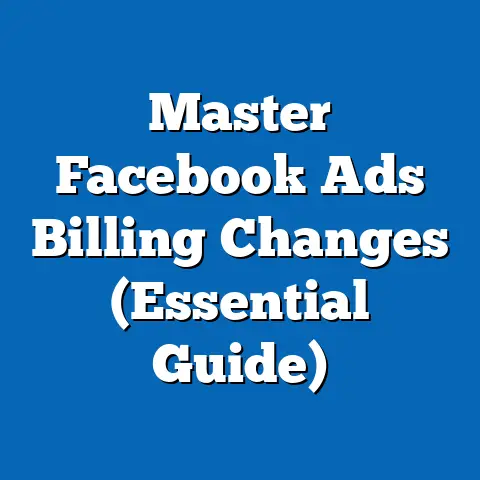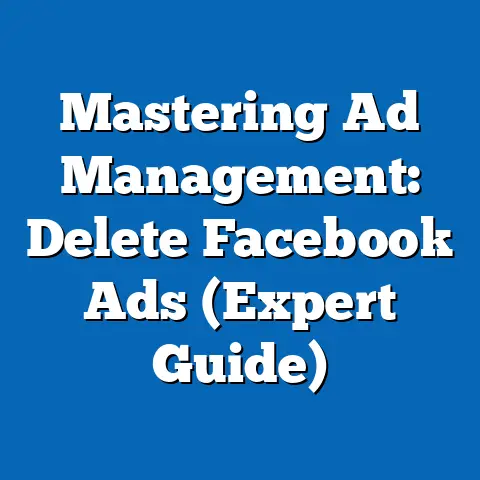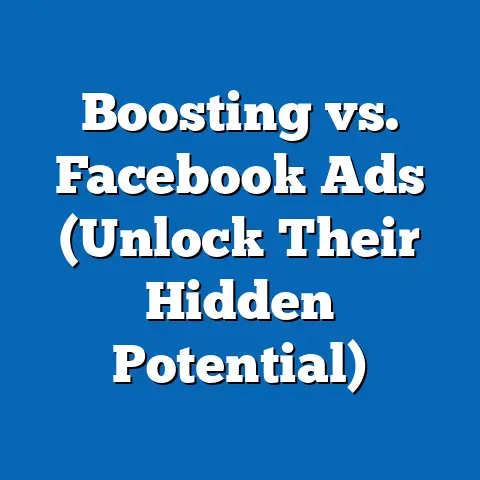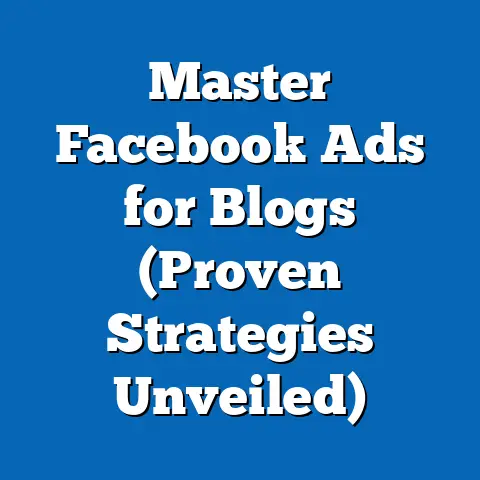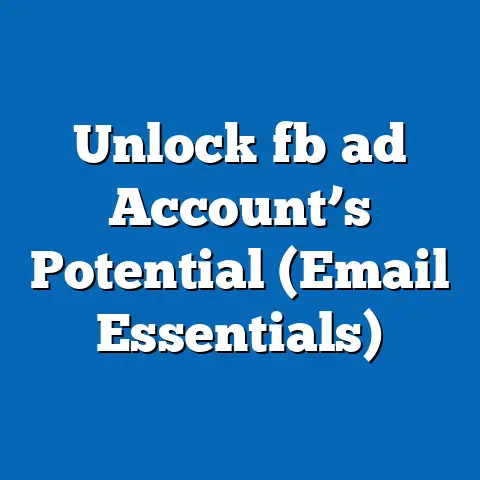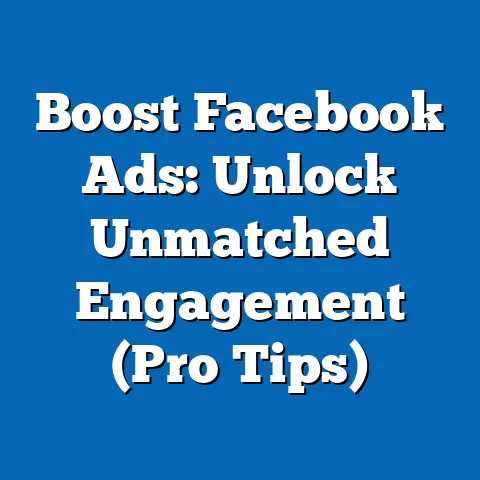Transform CBD Ads on Facebook in 2025 (Strategic Insights)
What if CBD brands could unlock the full potential of social media advertising to reach millions of wellness-focused consumers by 2025? As the cannabidiol (CBD) market continues to explode—projected to reach $47.22 billion globally by 2028 with a compound annual growth rate (CAGR) of 21.3% according to Fortune Business Insights—platforms like Facebook offer unparalleled opportunities for targeted outreach. However, navigating the complex landscape of advertising regulations, evolving consumer preferences, and platform algorithms remains a formidable challenge for CBD marketers.
Section 1: The CBD Market Boom and Digital Advertising Landscape
1.1 A Rapidly Growing Industry
The CBD industry has witnessed exponential growth over the past decade, driven by increasing consumer interest in natural wellness products. According to a 2023 report by Grand View Research, the global CBD market was valued at $9.3 billion in 2022 and is expected to grow at a CAGR of 16.8% from 2023 to 2030. In the United States alone, sales of CBD products reached $4.6 billion in 2020, with projections estimating a rise to $16 billion by 2025, as reported by the Brightfield Group.
This surge is fueled by growing acceptance of CBD for managing anxiety, pain, and sleep disorders. A 2022 survey by the National Center for Complementary and Integrative Health found that 26% of U.S. adults have used CBD products in the past year, up from 19% in 2019. These numbers signal a massive opportunity for brands to connect with a broad audience through digital channels.
1.2 The Role of Social Media in CBD Marketing
Social media platforms, particularly Facebook, are critical for reaching CBD consumers due to their vast user base and sophisticated targeting tools. As of 2023, Facebook boasts over 2.9 billion monthly active users worldwide, according to Statista, making it the largest social media platform for advertising. For CBD brands, which often face restrictions on traditional advertising channels like TV and radio due to regulatory constraints, Facebook offers a cost-effective way to build brand awareness and drive sales.
However, advertising CBD on Facebook is not without hurdles. The platform’s strict policies on drug-related content have historically limited CBD brands’ ability to promote their products directly. Despite these challenges, recent policy updates in 2023—allowing hemp-derived CBD products with less than 0.3% THC to be advertised in certain markets—signal a shift that could transform the landscape by 2025.
Section 2: Historical Trends in CBD Advertising on Facebook
2.1 Early Restrictions and Workarounds (2018-2021)
When CBD products first gained mainstream attention following the 2018 U.S. Farm Bill, which legalized hemp-derived CBD, brands flocked to social media to capitalize on the trend. However, Facebook’s blanket ban on drug-related content meant that direct CBD ads were frequently rejected or accounts were suspended. Marketers resorted to creative workarounds, such as promoting educational content about CBD benefits without mentioning specific products or using ambiguous imagery to skirt restrictions.
Data from a 2020 study by MediaRadar showed that only 12% of CBD brands successfully ran ads on Facebook during this period, often by focusing on hemp seed oil or wellness lifestyle content. This restrictive environment limited reach and forced brands to rely heavily on organic content and influencer partnerships, which lacked the precision of paid advertising.
2.2 Policy Shifts and Progress (2022-2023)
By 2022, Facebook began to loosen its grip on CBD advertising in response to evolving regulations and public demand. In July 2022, Meta (Facebook’s parent company) updated its policies to allow topical CBD products to be advertised in the U.S., provided they complied with federal and state laws. A 2023 update further permitted ads for ingestible hemp-derived CBD products with less than 0.3% THC in select states like California and Colorado, as reported by AdWeek.
These changes marked a turning point. According to a 2023 report by eMarketer, CBD ad spending on social media platforms, including Facebook, grew by 35% year-over-year, reaching an estimated $120 million in the U.S. alone. This growth reflects a newfound opportunity for brands to engage directly with consumers, though challenges like ad approval delays and inconsistent enforcement persist.
2.3 Looking Ahead to 2025
As we approach 2025, experts predict further relaxation of advertising policies on platforms like Facebook, driven by legislative progress and increasing consumer acceptance. The Brightfield Group forecasts that by 2025, 60% of U.S. adults will be familiar with CBD products, up from 40% in 2022, creating a more receptive audience for ads. If federal legalization of cannabis or clearer CBD regulations emerge, Facebook could fully open its doors to CBD advertising, potentially transforming the digital marketing landscape.
Section 3: Demographic Insights for Targeting CBD Audiences on Facebook
3.1 Who Uses CBD? Key Demographic Patterns
Understanding the demographics of CBD consumers is crucial for crafting effective Facebook ad campaigns. A 2023 survey by Statista revealed that 33% of U.S. adults aged 25-34 have used CBD products, making this age group the largest consumer segment. Millennials, in general, account for nearly 40% of CBD purchases, driven by their interest in natural remedies and stress management, according to data from the Brightfield Group.
Gender differences also play a role. Women are slightly more likely to use CBD than men, with 28% of women reporting usage compared to 24% of men, per a 2022 YouGov poll. Additionally, CBD usage is higher among urban dwellers (30%) compared to rural residents (18%), reflecting access to products and cultural acceptance in metropolitan areas.
3.2 Regional Variations in the U.S.
Geographic targeting is another critical factor for CBD ads on Facebook, given the patchwork of state-level regulations. States like California, Colorado, and Oregon—where cannabis and CBD are fully legal—report the highest usage rates, with over 35% of adults trying CBD products, according to Brightfield Group data. In contrast, states with stricter laws, such as Idaho and South Dakota, show usage rates below 10%.
Facebook’s geotargeting capabilities allow brands to focus on high-potential markets while avoiding areas where ads might violate local laws. For instance, in 2023, CBD brands running Facebook ads in California saw a 25% higher click-through rate (CTR) compared to national averages, as reported by Socialbakers.
3.3 Psychographic Targeting Opportunities
Beyond demographics and geography, psychographic targeting—focusing on interests, values, and behaviors—offers immense potential for CBD brands on Facebook. Data from a 2023 Nielsen report indicates that CBD users are 50% more likely to follow wellness and fitness pages on social media compared to non-users. They also show strong interest in topics like yoga, meditation, and organic foods, providing clear avenues for ad creative and audience segmentation.
By 2025, as Facebook continues to refine its interest-based targeting tools, brands can leverage these insights to reach niche audiences with tailored messaging. For example, ads highlighting CBD’s benefits for post-workout recovery could target fitness enthusiasts, while content focused on stress relief might resonate with users interested in mindfulness.
Section 4: Strategic Insights for CBD Ads on Facebook in 2025
4.1 Navigating Policy and Compliance
Despite policy relaxations, compliance remains a cornerstone of successful CBD advertising on Facebook. Brands must ensure their products meet federal and state guidelines, such as containing less than 0.3% THC for hemp-derived CBD, and provide third-party lab results to verify claims. Failure to comply can result in ad rejections or account suspensions, as seen in 2023 when 15% of CBD ad campaigns were flagged for policy violations, according to a report by AdAge.
To mitigate risks, brands should work with legal experts to review ad copy and imagery before submission. Additionally, focusing on educational content—such as blog posts or videos about CBD benefits—rather than direct product promotion can reduce the likelihood of rejection while still building brand trust.
4.2 Crafting Compelling Ad Creative
Ad creative is a make-or-break factor for CBD campaigns on Facebook. With users scrolling through hundreds of posts daily, standing out requires visually appealing and emotionally resonant content. A 2023 study by Hootsuite found that video ads on Facebook achieve 20% higher engagement rates compared to static images, making them a powerful tool for CBD brands to showcase testimonials or product benefits.
Copywriting should focus on pain points like stress, pain, or sleep issues while avoiding unsubstantiated health claims, which violate both Facebook policies and FDA guidelines. For instance, phrases like “relieve stress naturally” are safer than “cure anxiety,” ensuring compliance while still addressing consumer needs.
4.3 Leveraging Advanced Targeting and Retargeting
Facebook’s targeting capabilities are among its strongest assets for CBD marketers. By 2025, advancements in machine learning and user data analysis are expected to enhance lookalike audiences and custom audience tools, allowing brands to reach users similar to their existing customers with greater precision. A 2023 case study by Social Media Examiner showed that CBD brands using lookalike audiences saw a 30% increase in conversion rates compared to broad targeting.
Retargeting is equally critical, especially for a product like CBD where purchase decisions often involve research and consideration. Retargeting users who have visited a brand’s website or engaged with previous ads can boost conversions by 40%, according to data from WordStream. Implementing pixel tracking and dynamic ads will be essential strategies for 2025 campaigns.
4.4 Budgeting and ROI Optimization
Effective budgeting is key to maximizing the impact of CBD ads on Facebook. In 2023, the average cost-per-click (CPC) for health and wellness ads on Facebook was $1.32, slightly higher than the platform-wide average of $0.97, per WordStream data. CBD brands should allocate budgets strategically, focusing on high-performing demographics and regions while testing different ad formats to identify the best ROI.
A/B testing is a proven method for optimization. By testing variables like ad copy, visuals, and audience segments, brands can refine their approach over time. For example, a 2023 experiment by a mid-sized CBD company found that ads with lifestyle imagery outperformed product-focused ads by 18% in terms of CTR, as reported by Marketing Dive.
Section 5: Emerging Trends Shaping CBD Advertising by 2025
5.1 Increased Focus on Sustainability and Transparency
Consumers in 2025 are expected to prioritize brands that emphasize sustainability and transparency, especially in the wellness space. A 2023 survey by Deloitte found that 62% of U.S. consumers are willing to pay more for products from environmentally responsible companies. For CBD brands, highlighting sustainable farming practices or eco-friendly packaging in Facebook ads could resonate strongly with eco-conscious audiences.
Transparency about sourcing and testing is equally important. Brands that share lab results or certifications in their ad content are likely to build greater trust, particularly as the FDA ramps up scrutiny of CBD claims. By 2025, expect to see more ads linking to detailed product information as part of a broader push for credibility.
5.2 Integration of AI and Personalization
Artificial intelligence (AI) is set to revolutionize digital advertising by 2025, and CBD brands on Facebook stand to benefit significantly. AI-driven tools can analyze user behavior to deliver hyper-personalized ad experiences, such as recommending specific CBD products based on past searches or interests. According to a 2023 report by McKinsey, personalized ads can increase conversion rates by up to 15% compared to generic campaigns.
Facebook’s own AI algorithms are continually improving, enabling better ad placement and audience targeting. CBD brands that invest in AI-powered analytics tools will have a competitive edge in identifying high-value customers and optimizing ad spend.
5.3 Rise of Community-Driven Marketing
Building communities around CBD products will be a key trend by 2025, as consumers seek authentic connections with brands. Facebook Groups, which had over 1.8 billion users engaging monthly in 2023 per Meta’s data, offer a platform for brands to foster discussions about CBD benefits and wellness lifestyles. While direct advertising in groups is limited, brands can sponsor discussions or collaborate with group admins to gain visibility.
User-generated content (UGC) will also play a larger role. Encouraging customers to share their CBD experiences in reviews or testimonials and featuring this content in ads can boost authenticity. A 2023 Stackla survey found that 79% of consumers trust UGC more than branded content, underscoring its potential impact.
Section 6: Data Visualization Description for Reader Engagement
To bring the data to life, imagine a series of interactive charts and infographics accompanying this article. First, a bar chart comparing CBD market growth from 2020 to projected 2028 figures, highlighting the $47.22 billion milestone with a clear upward trend line. This visual would emphasize the industry’s rapid expansion and set the stage for advertising opportunities.
Next, a demographic pie chart breaking down CBD usage by age group (e.g., 25-34 at 33%, 35-44 at 25%) would illustrate key target audiences for Facebook ads. A U.S. heat map showing CBD usage rates by state—darker shades for high-usage areas like California—would provide a geographic perspective. Finally, a line graph tracking Facebook ad spending by CBD brands from 2020 to 2023, with a projected spike to 2025, would underscore the growing investment in digital marketing.
Section 7: Challenges and Risks for CBD Ads in 2025
7.1 Regulatory Uncertainty
Despite progress, regulatory uncertainty remains a significant hurdle for CBD advertising. The FDA has yet to establish clear guidelines for CBD marketing claims, and as of 2023, over 300 warning letters have been issued to companies for misleading health claims, per FDA records. Without federal clarity by 2025, brands risk penalties or ad rejections on Facebook for non-compliant content.
State-level disparities add another layer of complexity. While some states embrace CBD, others maintain strict bans, creating a fragmented market. Brands must stay agile, monitoring legislative developments to adjust their strategies accordingly.
7.2 Consumer Skepticism and Market Saturation
As the CBD market grows, so does consumer skepticism about product efficacy and quality. A 2023 Consumer Reports survey found that 45% of CBD users are concerned about inconsistent product quality, up from 38% in 2021. By 2025, with hundreds of brands vying for attention on Facebook, standing out will require robust trust-building measures like certifications and customer reviews.
Market saturation also poses a risk. With ad costs rising due to increased competition—eMarketer predicts a 10% increase in CPC for wellness ads by 2025—smaller brands may struggle to compete with larger players. Differentiation through niche targeting and unique value propositions will be essential.
Conclusion: Broader Implications and Future Trends
As we look toward 2025, the transformation of CBD advertising on Facebook holds immense potential for brands willing to navigate its challenges. With the global CBD market poised to surpass $47 billion by 2028 and consumer familiarity growing, platforms like Facebook offer a gateway to millions of wellness-focused users. Strategic targeting, compliant creative, and investment in emerging trends like AI and community-building can position brands for success in this dynamic space.
However, the road ahead is not without obstacles. Regulatory uncertainty, rising ad costs, and consumer skepticism will test marketers’ adaptability. Brands that prioritize transparency, leverage data-driven insights, and build authentic connections with audiences are most likely to thrive.
Ultimately, the evolution of CBD ads on Facebook reflects broader shifts in digital marketing and consumer behavior. As social media platforms continue to adapt to new industries and regulations, the lessons learned from CBD advertising could shape strategies across other regulated sectors. By 2025, CBD brands that master this landscape may not only dominate their niche but also set new standards for innovative, compliant digital advertising.

